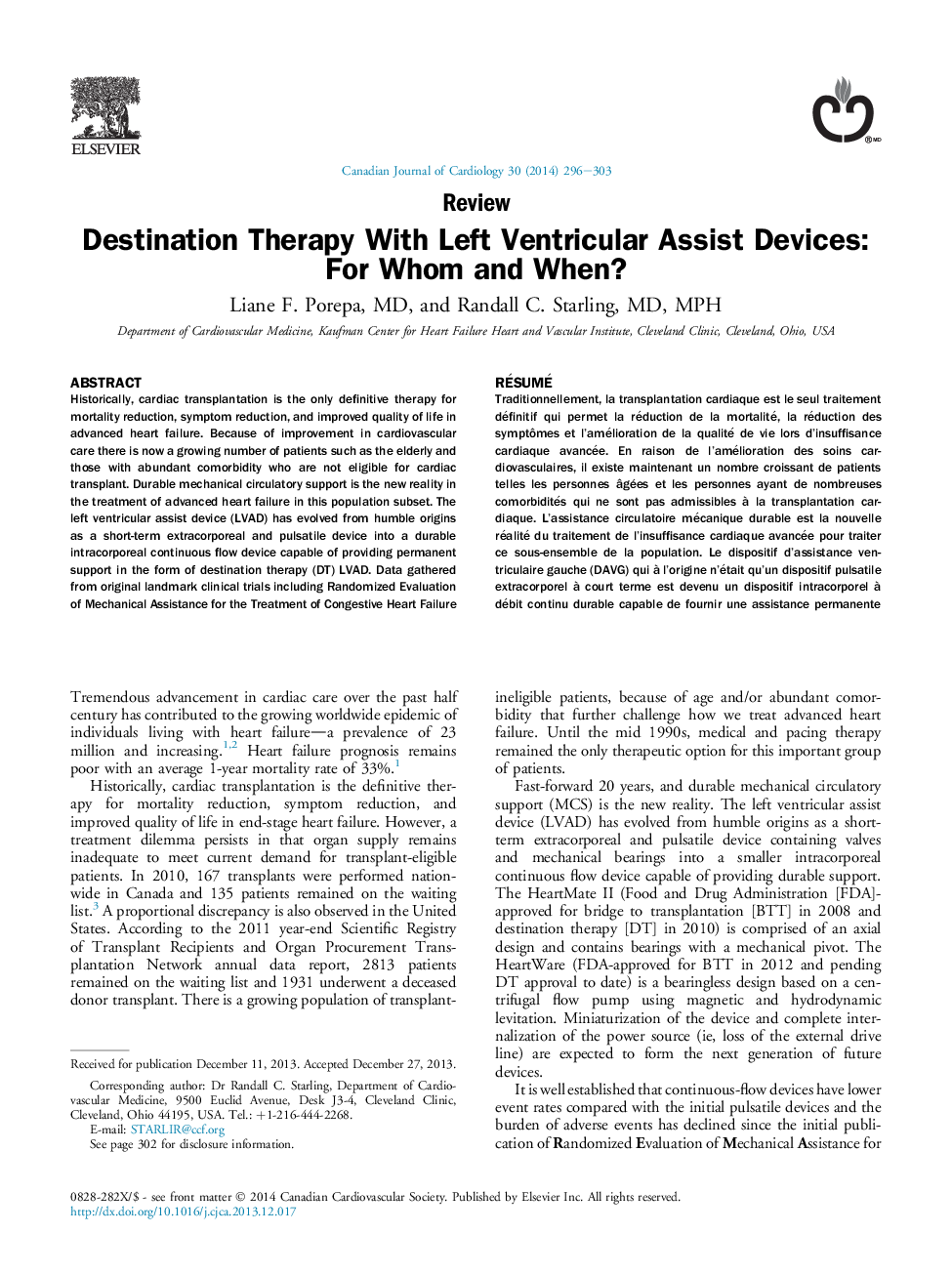| کد مقاله | کد نشریه | سال انتشار | مقاله انگلیسی | نسخه تمام متن |
|---|---|---|---|---|
| 2721797 | 1566515 | 2014 | 8 صفحه PDF | دانلود رایگان |
Historically, cardiac transplantation is the only definitive therapy for mortality reduction, symptom reduction, and improved quality of life in advanced heart failure. Because of improvement in cardiovascular care there is now a growing number of patients such as the elderly and those with abundant comorbidity who are not eligible for cardiac transplant. Durable mechanical circulatory support is the new reality in the treatment of advanced heart failure in this population subset. The left ventricular assist device (LVAD) has evolved from humble origins as a short-term extracorporeal and pulsatile device into a durable intracorporeal continuous flow device capable of providing permanent support in the form of destination therapy (DT) LVAD. Data gathered from original landmark clinical trials including Randomized Evaluation of Mechanical Assistance for the Treatment of Congestive Heart Failure (REMATCH), and the Heart Mate II Trial, and the Interagency Registry for Mechanically Assisted Circulatory Support (INTERMACS) provide insight into the type of patient and the timing in which to consider DT LVAD therapy. There are a number individual patient warning signs and symptoms that predate clinical decline; thus, identifying individuals who might benefit from a DT LVAD strategy. The adverse event burden that accompanies DT LVAD therapy cannot be ignored when considering LVAD as an adjunct to ongoing medical therapy. Trends in patient selection regarding mechanical circulatory support continue to evolve along with the technology. As more clinical outcome data are gathered we will continue to refine our patient selection criteria and timing of implant.
RésuméTraditionnellement, la transplantation cardiaque est le seul traitement définitif qui permet la réduction de la mortalité, la réduction des symptômes et l’amélioration de la qualité de vie lors d’insuffisance cardiaque avancée. En raison de l’amélioration des soins cardiovasculaires, il existe maintenant un nombre croissant de patients telles les personnes âgées et les personnes ayant de nombreuses comorbidités qui ne sont pas admissibles à la transplantation cardiaque. L’assistance circulatoire mécanique durable est la nouvelle réalité du traitement de l’insuffisance cardiaque avancée pour traiter ce sous-ensemble de la population. Le dispositif d’assistance ventriculaire gauche (DAVG) qui à l’origine n’était qu’un dispositif pulsatile extracorporel à court terme est devenu un dispositif intracorporel à débit continu durable capable de fournir une assistance permanente sous forme de DAVG en traitement définitif (TD). Les données qui ont été recueillies dans des essais cliniques originaux marquants incluant l’étude REMATCH (Randomized Evaluation of Mechanical Assistance for the Treatment of Congestive Heart Failure), l’essai du Heart Mate II et le registre INTERMACS (Interagency Registry for Mechanically Assisted Circulatory Support) donnent un aperçu du type de patients et du moment propice où considérer le DVAG en TD. Il existe chez les patients de nombreux signes et symptômes précurseurs individuels qui sont antérieurs au déclin clinique, ce qui par conséquent identifie les individus qui pourraient profiter de la stratégie du DAVG en TD. Le fardeau des événements indésirables qui accompagne le TD par DAVG ne peut être ignoré lorsque l’on considère le DAVG comme un complément au traitement médical en cours. Les tendances dans la sélection des patients concernant l’assistance circulatoire mécanique continuent à évoluer parallèlement à la technologie. Lorsque plus de données sur les résultats cliniques seront recueillies, nous continuerons d’affiner nos critères concernant la sélection des patients et la détermination du moment propice à l’implantation.
Journal: Canadian Journal of Cardiology - Volume 30, Issue 3, March 2014, Pages 296–303
